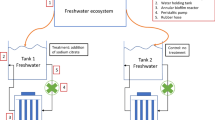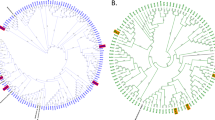Abstract
Protistan grazing on biofilms is potentially an important conduit enabling energy flow between microbial trophic levels. Contrary to the widely held assumption that protistan feeding primarily involves ingestion of biofilm cells, with negative consequences for the biofilm, this study demonstrated preferential grazing on the noncellular biofilm matrix by a ciliate, with selective ingestion of yeast and bacterial cells of planktonic origin over attached and biofilm-derived planktonic cells. Introducing a ciliate to two biofilm-forming Cryptococcus species, as well as two bacterial species in a model biofilm system, fluorescent probes were applied to determine ingestion of cellular and noncellular biofilm fractions. Fluoromicroscopy, as well as photometric quantification, confirmed that protistan grazing enhanced yeast biofilm metabolism, and an increase in biofilm biomass and viability. We propose that the extracellular polymeric matrix of biofilms may act as an interface regulating interaction between predator and prey, while serving as source of nutrients and energy for protists.





Similar content being viewed by others
References
Azam, F, Fenchel, T, Field, JG, Gray, JS, Meyer-Reil, LA, Thingstad, F (1983) The ecological role of water-column microbes in the sea. Mar Ecol Prog Ser 10: 257–263
Bester, E, Wolfaardt, G, Joubert, L, Garny, K, Saftic, S (2005) Planktonic-cell yield of a pseudomonad biofilm. Appl Environ Microbiol 71: 7792–7798
Bettarel, Y, Sime-Ngando, T, Amblard, C, Dolan, J (2004) Viral activity in two contrasting lake ecosystems. Appl Environ Microbiol 70: 2941–2951
Bonkowski, M (2004) Protozoa and plant growth: the microbial loop in soil revisited. New Phytol 162: 617–631
Botes, AL, Lotter, J, Rhode, OHJ, Botha, A (2005) Interspecies differences in the enantioselectivity of epoxide hydrolases in Cryptococcus laurentii (Kufferath) C.E. Skinner and Cryptococcus podzolicus (Bab'jeva & Reshetova) Golubev. Syst Appl Microbiol 28: 27–33
Brown, MRW, Barker, J (1999) Unexplored reservoirs of pathogenic bacteria: protozoa and biofilms. Trends Microbiol 7: 46–50
Capra, F (1996) The Web of Life. Flamingo, London
Couch, CA, Meyer, JL, Hall, RO (1996) Incorporation of bacterial extracellular polysaccharide by black fly larvae (Simuliidae). J North Am Benthol Soc 15: 289–299
Decho, AW (1990) Microbial exopolymer secretions in ocean environments: their role(s) in food webs and marine processes. Oceanogr Mar Biol Annu Rev 28: 73–163
Decho, AW (2000) Microbial biofilms in intertidal systems: an overview. Cont Shelf Res 20: 1257–1273
Diling, L, Brzezinski, MA (2004) Quantifying marine snow as a food choice for zooplankton using stable silicon isotope tracers. J Plankton Res 26: 1105–1114
Donlan, RM, Costerton, JW (2002) Biofilms: survival mechanisms of clinically relevant microorganisms. Clin Microbiol Rev 15: 167–193
Douglas, LJ (2003) Candida biofilms and their role in infection. Trends Microbiol 11: 30–36
Dutz, J, Klein-Breteler, WCM, Kramer, G (2005) Inhibition of copepod feeding by exudates and transparent exopolymer particles (TEP) derived from a Phaeocystis globosa dominated phytoplankton community. Harmful Algae 4: 929–940
Flemming, H-C, Leis, A, Strathmann, M, Leon-Morales, F (2005) The matrix reloaded—an interactive milieu. In: McBain, A, Allison, D, Pratten, J, Spratt, D, Upton, M, Verran, J (Eds.) Biofilms: Persistence and Ubiquity. BiofilmClub, Manchester, pp 67–82
Flemming, H-C, Wingender, J (2001) Relevance of microbial extracellular polymeric substances (EPSs)—part I: structural and ecological aspects. Water Sci Technol 43: 1–8
Hahn, MW, Höfle, MG (2001) Grazing of protozoa and its effect on populations of aquatic bacteria. FEMS Microbiol Ecol 35: 113–121
Hall, RO, Meyer, JL (1998) The trophic significance of bacteria in a detritus-based stream food web. Ecology 79: 1995–2012
Harder, W, Dijkhuizen, L (1983) Physiological responses to nutrient limitation. Annu Rev Microbiol 37: 1–23
Heaton, K, Drinkall, J, Minett, A, Hunt, A, Parry, JD (2001) Amoeboid grazing on surface-associated prey. In: Gilbert, P, Allison, DG, Brading, M, Verran, J, Walker, J (Eds.) Biofilm Community Interactions: Chance or Necessity? Bioline, Cardiff, pp 293–301
Højberg, O, Schnider, U, Winteler, HV, Sorensen, J, Haas, D (1999) Oxygen-sensing reporter strain of Pseudomonas fluorescens for monitoring the distribution of low-oxygen habitats in soil. Appl Environ Microbiol 65: 4085–4093
Holmström, C, Kjelleberg, S (1999) Marine Pseudoalteromonas species are associated with higher organisms and produce biologically active extracellular agents. FEMS Microbiol Ecol 30: 285–293
Huws, SA, McBain, AJ, Gilbert, P (2005) Protozoan grazing and its impact upon population dynamics in biofilm communities. J Appl Microbiol 98: 238–244
Jackson, SM, Jones, EBG (1991) Interactions within biofilms: the disruption of biofilm structure by protozoa. Kieler Meeresforsch 8: 264–268
Jürgens, K, Matz, C (2002) Predation as a shaping force for the phenotypic and genotypic composition of planktonic bacteria. Antonie van Leeuwenhoek 81: 413–434
Jurgens, K, Pernthaler, J, Schalla, S, Amann, R (1999) Morphological and compositional changes in a planktonic bacterial community in response to enhanced protozoan grazing. Appl Environ Microbiol 65: 1241–1250
Kamper, M, Vetterkind, S, Berker, R, Hoppert, M (2004) Methods for in situ detection and characterization of extracellular polymers in biofilms by electron microscopy. J Microbiol Methods 57: 55–64
Kinner, NE, Harvey, RW, Blakeslee, K, Novarino, G, Meeker, LD (1998) Size-selective predation on groundwater bacteria by nano-flagellates in an organic-contaminated aquifer. Appl Environ Microbiol 64: 618–625
Krembs, C, Eicken, H, Junge, K, Deming, JW (2002) High concentrations of exopolymeric substances in arctic winter sea ice: implications for the polar ocean carbon cycle and cryoprotection of diatoms. Deep-Sea Res 49: 2163–2181
Lawrence, JR, Snyder, RA (1998) Feeding behaviour and grazing impacts of a Euplotes sp. on attached bacteria. Can J Microbiol 44: 623–629
Ling, SC, Alldredge, AL (2003) Does the marine copepod Calanus pacificus consume transparent exopolymer particles (TEP)? J Plankton Res 25: 507–515
Long, RA, Azam, F, (1996) Abundant protein-containing particles in the sea. Aquat Microb Ecol 10: 213–221
Matz, C, Bergfeld, T, Rice, SA, Kjelleberg, S (2004) Microcolonies, quorum sensing and cytotoxicity determine the survival of Pseudomonas aeruginosa biofilms exposed to protozoan grazing. Environ Microbiol 6: 218–226
Matz, C, Deines, P, Jurgens, K (2002) Phenotypic variation in Pseudomonas sp. CM10 determines microcolony formation and survival under protozoan grazing. FEMS Microbiol Ecol 39: 57–65
Matz, C, Jurgens, K (2003) Interaction of nutrient limitation and protozoan grazing determines the phenotypic structure of a bacterial community. Microb Ecol 45: 384–398
Matz, C, Kjelleberg, S (2005) Off the hook—how bacteria survive protozoan grazing. Trends Microbiol 13: 302–307
Matz, C, McDougald, D, Moreno, AM, Yung, PY, Yildiz, FH, Kjelleberg, S (2005) Biofilm formation and phenotypic variation enhance predation-driven persistence of Vibrio cholerae. Proc Natl Acad Sci USA 102: 16819–16824
Millard, PJ, Roth, BL, Thi, H-PT, Yue, ST, Haugland, RP (1997) Development of the FUN-1 family of fluorescent probes for vacuole labeling and viability testing of yeasts. Appl Environ Microbiol 63: 2897–2905
Mudryk, ZJ, Skorczewski, P (2004) Extracellular enzyme activity on the air–water interface of an estuarine lake. Estuar Coast Shelf Sci 59: 59–67
Murray, JLS, Jumars, PA (2002) Clonal fitness of attached bacteria predicted by analog modeling. Bioscience 52: 343–355
Neu, T (1996) Significance of bacterial surface-active compounds in interaction of bacteria with interfaces. Microbiol Rev 60: 151–166
Parry, JD, Hunt, AP, Drinkall, J, Heaton, K (2001) The influence of free living protozoa on aquatic biofilm dynamics. In: Gilbert, P, Allison, DG, Brading, M, Verran, J, Walker, J (Eds.) Biofilm Community Interactions: Chance or Necessity? Bioline, Cardiff, pp 255–261
Passow, U (2002) Transparent exopolymer particles in aquatic environments. Prog Oceanogr 55: 287–333
Passow, U, Alldredge, AL (1999) Do transparent exopolymer particles (TEP) inhibit grazing by the euphausiid Euphasia pacifica? J Plankton Res 21: 2203–2217
Pederson, K (1990) Biofilm development on stainless steel and PVC surfaces in drinking water. Water Res 24: 239–243
Prieto, L, Sommer, F, Stibor, H, Koeve, W (2001) Effects of planktonic copepods on transparent exopolymeric particles (TEP) abundance and size spectra. J Plankton Res 23: 515–525
Ronn, R, McCaig, AE, Griffiths, BS, Prosser, JI (2002) Impact of protozoan grazing on bacterial community structure in soil microcosms. Appl Environ Microbiol 68: 6094–6105
Saftic, S, Joubert, L-M, Bester, E, Wolfaardt, G. A biofilm apparatus for the teaching lab. ASM Focus Microbiol Educ 11: 12–14
Sand, W, Gehrke, T (1999) Analysis and function of the EPS from the strong acidophile Thiobacillus ferrooxidans. In: Wingender, J, Neu, TR, Flemming, H-C (Eds.) Microbial Extracellular Polymeric Substances. Springer, Berlin, pp 127–141
Sherr, EB (1988) Direct use of high molecular weight polysaccharide by heterotrophic flagellates. Nature 335: 348–351
Snyder, RA (1991) Chemoattraction of a bacterivorous climate to bacteria surface compounds. Hydrobiologia 215: 205–213
Steenbergen, JN, Shumann, HA, Casadevall, A (2001) Cryptococcus neoformans interactions with amoebae suggest an explanation for its virulence and extracellular pathogenic strategy in macrophages. Proc Natl Acad Sci USA 98: 15245–15250
Strom, S, Wolfe, G, Holmes, J, Stecher, H, Schimeneck, C, Lambert, S, Moreno, E (2003) Chemical defense in the microplankton I: feeding and growth rates of heterotrophic protists on the DMS-producing phytoplankter Emiliania huxleyi. Limnol Oceanogr 48: 217–229
Van der Aa, BC, Dufrene, YF (2002) In situ characterization of bacterial extracellular polymeric substance by AFM. Colloids Surf B Biointerfaces 23: 173–182
Verdugo, P, Alldredge, AL, Azam, F, Kirchman, DL, Passow, U, Santschi, PH (2004) The oceanic gel phase: a bridge in the DOM–POM continuum. Mar Chem 92: 67–85
Wolfaardt, GM, Lawrence, JR, Headley, JV, Robarts, RD, Caldwell, DE (1994) Microbial exopolymers provide a mechanism for bioaccumulation of contaminants. Microb Ecol 27: 279–291
Wolfaardt, GM, Lawrence, JR, Robarts, RD, Caldwell, SJ, Caldwell, DE (1994) Multicellular organization in a degradative biofilm community. Appl Environ Microbiol 60: 434–446
Wolfe, GV (2000) The chemical defense ecology of marine unicellular plankton: constraints, mechanisms, and impacts. Biol Bull 198: 225–244
Acknowledgments
The Claude Leon Foundation is acknowledged for financial support for L.-M. Joubert. Funding from the South African NRF and MRC for G. Wolfaardt is acknowledged. S. Saftic is thanked for the use of the OLAPH prototype (German patent no. 19947651).
Author information
Authors and Affiliations
Corresponding author
Rights and permissions
About this article
Cite this article
Joubert, LM., Wolfaardt, G.M. & Botha, A. Microbial Exopolymers Link Predator and Prey in a Model Yeast Biofilm System. Microb Ecol 52, 187–197 (2006). https://doi.org/10.1007/s00248-006-9063-7
Received:
Revised:
Accepted:
Published:
Issue Date:
DOI: https://doi.org/10.1007/s00248-006-9063-7




